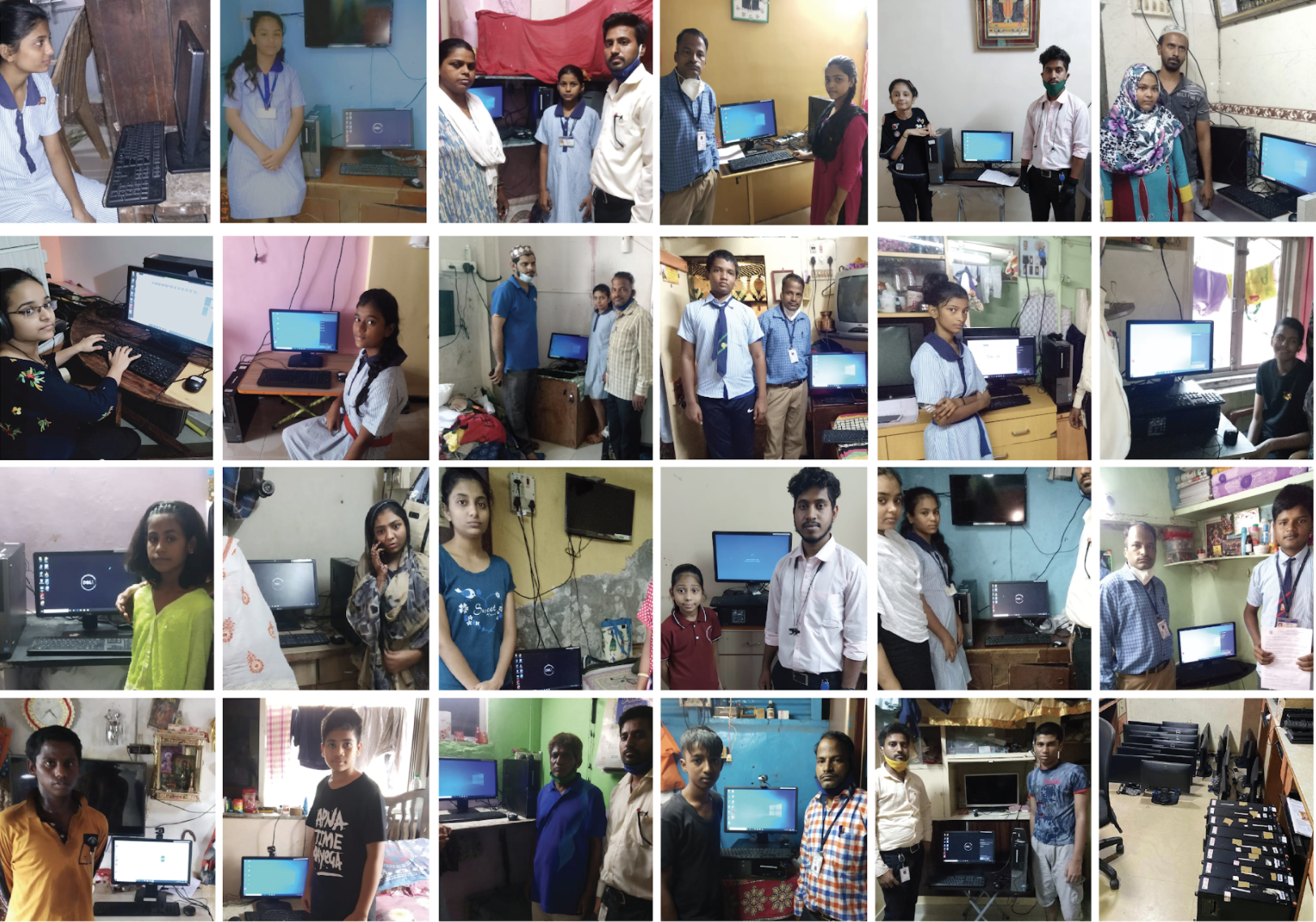Schools and colleges reacted very quickly to the pandemic and started online classes. Running online classes was a major change for everyone involved. Teachers had to learn technology to deliver online classes and prepare material differently in order to teach effectively. Parents had to ensure that the children had a quiet space at home to attend the classes, stable Internet access, electricity and a device. In addition to paying school fees while their incomes were stopped. Children had to accept the new normal of figuring out all the lessons on the small screen and waiting for their turn to ask a question or speak over each other and drive the teacher insane.
However not all parents were able to procure the necessary space, internet, electricity or a device. The affluent and the middle-class families somehow made sacrifices and used the family desktops, laptops and tablets to prioritize education. Some of the lower middle-class families used their mobile phone handsets for the same. However large populations of the country are below this class of income and have no devices or data plans. Some families have multiple children and one or no device.
Schools are running the online classes at the regular school hours and when there are multiple siblings trying to attend classes with one device the younger kids suffer. Some schools are not running any classes as the students here come from very poor families and don’t have the means to attend online, while some schools are seeing less than 50% attendance in the online classes. Some children have gone to their hometowns and don’t have access from there. Some others have older siblings attending classes on the father’s single smart mobile phone the family possesses. Some don’t have the money to pay for a data plan in order to attend classes.
At the same time corporations also reacted very quickly and moved to working remotely from home. This required them to ensure all employees had laptops and this made some of the desktops in their offices redundant. Even prior to the pandemic the corporate world had been moving away from desktops to laptops and tablets as the processing power in mobile devices had caught up with the desktops.
On the one hand there is technology getting outdated, obsolete and wasting away while there are children missing out on opportunity to learn and continue their quest for knowledge. A mechanism can be created to leverage the technology that the corporations donate to solve the device issue. We can identify a technology services partner to refresh the devices and prepare them with basic software and hardware needed for primary and secondary education and install them at the student’s homes. Additionally, the schools can sign up with local technology providers to maintain / support these devices. There are a number of good Samaritans who are willing to pay for these support services.
The last piece of the puzzle is data. With the proliferation of mobile phone plans across the nation, data has become cheap and easily accessible. We need support from telecom providers to donate data plans needed for the students to complete their studies for the next year or so until the pandemic lasts.
Other collateral benefits of this scheme are as follows: 1) Corporations will be able to write off this dead inventory and get some CSR credit 2) eWaste going to landfills will be reduced 3) Kids will have access to the internet which will open up more doors for innovation and knowledge access. 4) Kids will spend their free time more productively and stay out of mischief.
This will be one among the many projects run by Tulsipatra Foundation as the implementation partner. Tulsipatra Foundation aims to be the catalyst in connecting the dots and the people who have with the people who need. Simply put the devices (desktops, laptops, tablet, smartphones) will be collected from the donors, cleaned / refreshed and provided to the constituents including a data plan.

